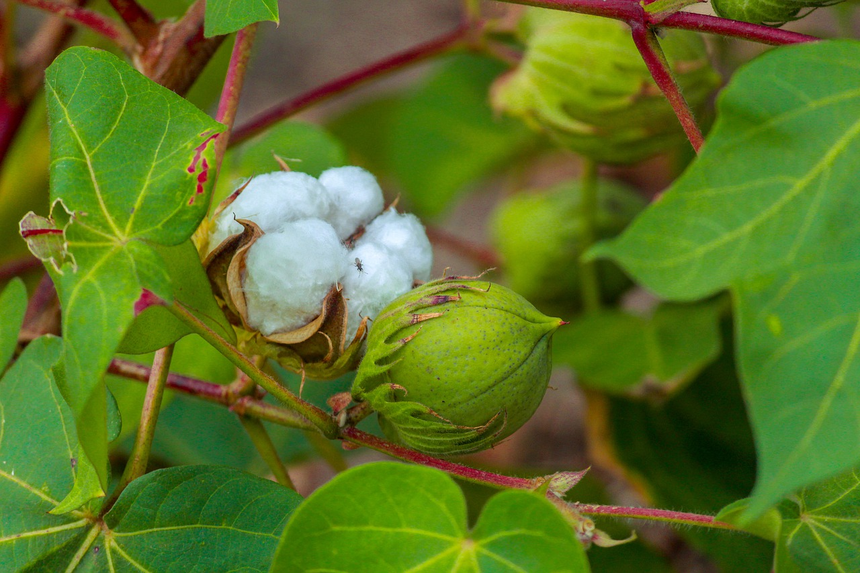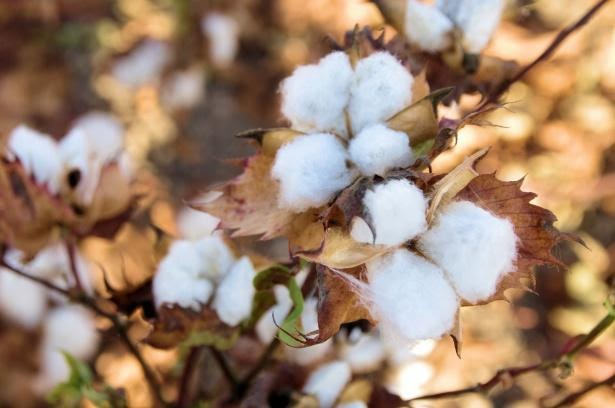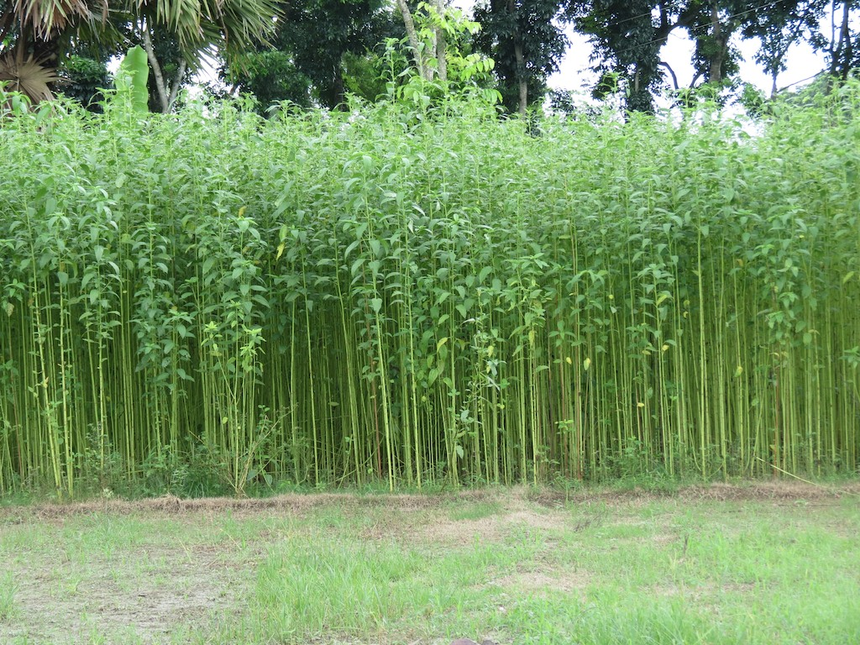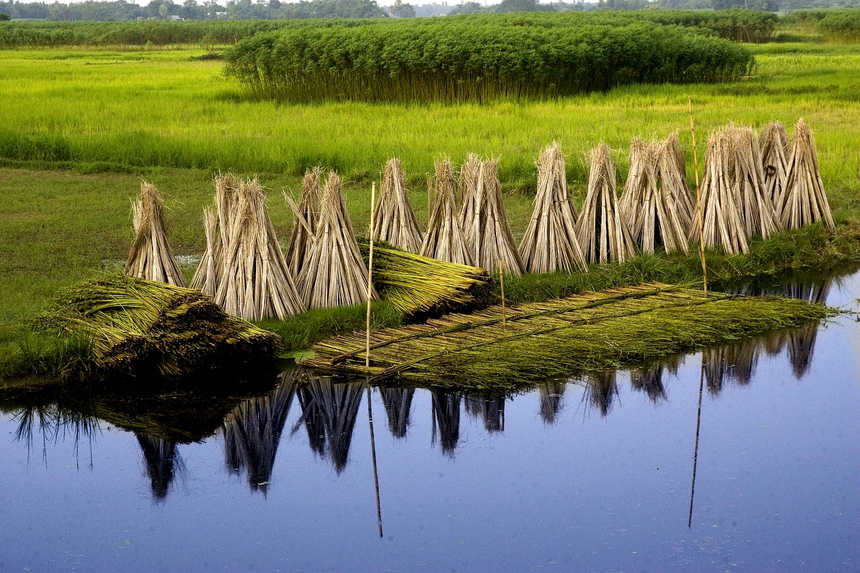Plant Fibers - Definition, Examples, List, FAQs
Firstly we will discuss “What is plant fibre?”
So here we will discuss plant fibres. The plants which have fibres in them are called plant fibres and crops which are sown to get the required fibre such crops are called fibre crops or in case of trees fibres are obtained and their production are called fibre trees. Once they are cultivated then proper climatic conditions are provided to them in order to make them strong enough and then at the right time they are harvested and further processed in the factories in order to extract the required fibres. There is a substance called cellulose present in the plant which gives strength to the fibre. Plant fibres are obtained from cotton and jute.
Here a thing which comes to one’s mind is which substance gives strength to the fibre.
There are mainly two types of fibres which we get from plants namely jute and cotton. These two fibres require different types of climatic conditions to grow. Also as these are obtained naturally therefore they are called natural fibres. These natural fibres are then further processed with chemicals in the industry in order to produce other modified fibres or a variety of fibres.
As these two fibres are obtained from nature therefore, it requires a lot of hardwork and patience and therefore they are quite expensive but the fibres which are manufactured in the industry are cheaper than these but they may cause some other reactions to the skin whereas the natural fibres are mostly safe. Not only for wearing purposes but the fibres play an important role in human life.
Now as it is known that the natural fibres are also of two types which are the fibres which are obtained from plants are called plant fibres and the fibres which are obtained from animals are called animal fibres. It’s the time to discuss the difference between plant and animal fibres.
- As we have already discussed, plant fibres get strength from the cellulose present in them in the same animal fibre also need a strength and they get a strength from the protein so we can say that animal fibres contain proteins.
- One of the important differences between plant fibre and animal fibre is that plant fibre is obtained from the different parts of the plants like, stem, seeds, and leaves. On the other hand the animal fibres are extracted from the skin of the animals therefore they are bulkier than the plant fibres.
- Plant fibres examples are: cotton, jute, flax etc. on the other hand examples of animal fibres are: silk, wool etc.
- Jute fibres are obtained from jute plants.
Also read -
- NCERT Solutions for Class 11 Chemistry
- NCERT Solutions for Class 12 Chemistry
- NCERT Solutions for All Subjects
We will be discussing the two most important plant fibres namely cotton and jute. Firstly we will talk about the cotton plant:
- Cotton plants come under the category of the shrub.
- It is the fibre crop containing the higher percentage of cellulose.
- When the ball of cotton gets burst it leads to the dispersal of seeds.
- India has quite a good production of cotton constituting a good percentage than the other countries of the world.

Biology of a cotton plant
Here we will discuss the biology of the cotton flower and the other conditions required for the growth of the cotton plant.
Here we will talk about the environmental conditions required for the growth of a cotton plant. So the growth of a cotton plant requires moderate rainfall, frost free time during the growth, and soil with a good holding capacity like black soil. Cotton is best grown in the black soil. This black soil has a good water holding capacity and allows cotton to grow.

Related Topics Link, |
Now we will be discussing about another natural fibre i.e jute.
- Jute is also a fibre plant which ranges from 3m to 10m.
- Jute fibres are obtained from jute plants.
- This plant fibre is a little rough in nature but of great variety of uses.
- It comprises the cellulose which is the base material for all plant fibres but in addition to that it contains lignin.
- It is one of the cheapest natural fibres known.

It is interesting to discuss here how jute fibre is obtained from the jute plant.
Also Read:
- NCERT Solutions for Class 11 Chemistry Chapter 14 Environmental Chemistry
- NCERT Exemplar Class 11 Chemistry Solutions Chapter 14 Environmental Chemistry
- NCERT notes Class 11 Chemistry Chapter 14 Environmental Chemistry
Jute plant requires standing water to grow and therefore grows well in the alluvial soil. The process of jute cultivation is as follows:
Firstly the seeds are sown and then the jute is allowed to cultivate in standing water with a good amount of heat required then when the jute gets grown up then the stem of the plant is used to extract jute from it. Then several stems of this jute plant are collected and then dipped or more precisely we can say that it is washed in the slow flowing water then the workforce of the farmers separate the fibres from the unwanted material present. Further it is processed into yarns and then into fibres.

Also check-
- NCERT Exemplar Class 11th Chemistry Solutions
- NCERT Exemplar Class 12th Chemistry Solutions
- NCERT Exemplar Solutions for All Subjects
NCERT Chemistry Notes: